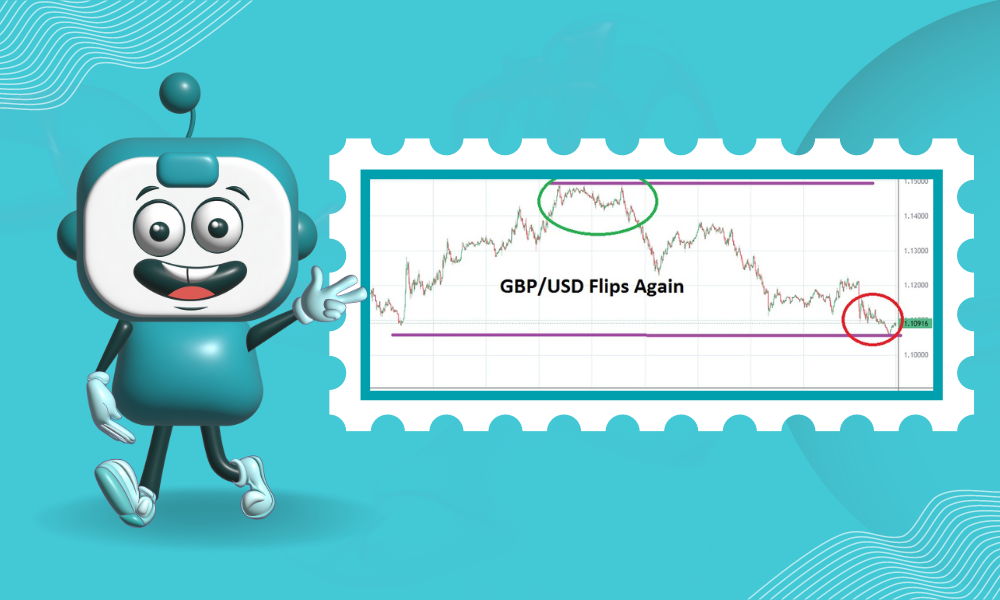
The GBP/USD had another week of chaotic results in the last five days of trading, and it's likely that the currency pair hasn't seen the end of chaotic results yet.
On October 4 and 5, the GBP/USD reached a high of almost 1.14950. Some traders might think this has a lot to do with the "turnaround" of the Tory government under Liz Truss, but they might be wrong. When the U.K. government's proposed tax policy got a lot of bad press, it basically gave up on it. In just a few days, Prime Minister Liz Truss changed her mind about what she had said she believed. This did not make many financial institutions happy.
At the start of trading this week, the GBP/USD will be around 1.10900. Before last week's weekend, the GBP/USD was trading almost calmly near the 1.12100 ratio. Then, the U.S. jobs report came out and was better than expected, which turned the markets again.
Poor leadership and unclear interest rates are making a mess.
Early last week, not only did the U.K. government change its stated economic policy, but financial houses also started to think that the U.S. Federal Reserve would start to soften its talk about interest rates. This pushed the GBP/USD up. Early last week, global stock market indices went up, and there were a few signs of hope. But comments made by U.S. Fed officials at the end of the week and jobs data that was better than expected made the USD stronger on Friday.
The idea that inflation will suddenly drop by a lot was "hurt" by the fact that the price of Crude Oil went up last week and is now trading for over $90.00 USD again.
People are getting used to the idea that the U.S. Federal Reserve will raise interest rates by another 0.75 percent in November.
Still a problem is inflation, and the rise in crude oil prices is a problem for the GBP/USD exchange rate.
Technical traders may want to scream at this point while reading this article, but there is one more big problem: inflation. The effect of inflation on the economies of the U.K. and the rest of the world is not going to go away quickly.
The price of crude oil has been going up for almost 8 trading days. Interest rates go up when inflation is high. The GBP/USD did reach levels seen on September 21 at the beginning of last week, but the rise was met with a lot of selling because fundamentals were making financial houses nervous. The coming week of trading looks like it will be more unstable in terms of how people feel. The GBP/USD prices only went down before the weekend.
GBP/USD Weekly Outlook:
The speculative price range for GBP/USD is 1.06275 to 1.13045
Since financial institutions were nervous going into the weekend, it wouldn't be surprising if bearish activity kept going early this week. Speculators may use the level of 1.10000 for the GBP/USD as a psychologically important sign. If this point is broken down, traders should be ready for the GBP/USD to possibly test the 1.09000 to 1.08500 levels. When trading below this mark, it may feel like the selling is too strong, but we have seen this selling "show" from the GBP/USD recently.
In the days ahead, traders should expect the market to be more volatile. It's unlikely that the dark economic clouds that hang over global markets will lift soon. This could cause the GBP/USD to drop even more. Traders are right to wonder where support will start to show that it will last. Maybe the 1.10000 level will be strong, but if things stay tense, Crude Oil prices stay high, and global stock markets do poorly, the GBP/USD could go down.
When speculators think the GBP/USD has been oversold and want to take advantage of small moves up, they should look for upside with realistic goals for now. There are signs that the 1.13000 level above could be seen as a strong point of resistance this week. The idea that the U.S. Federal Reserve will stop raising interest rates in a "hawkish" way has been put to rest for the time being, and financial houses will have to figure out how to deal with their uncertain futures.